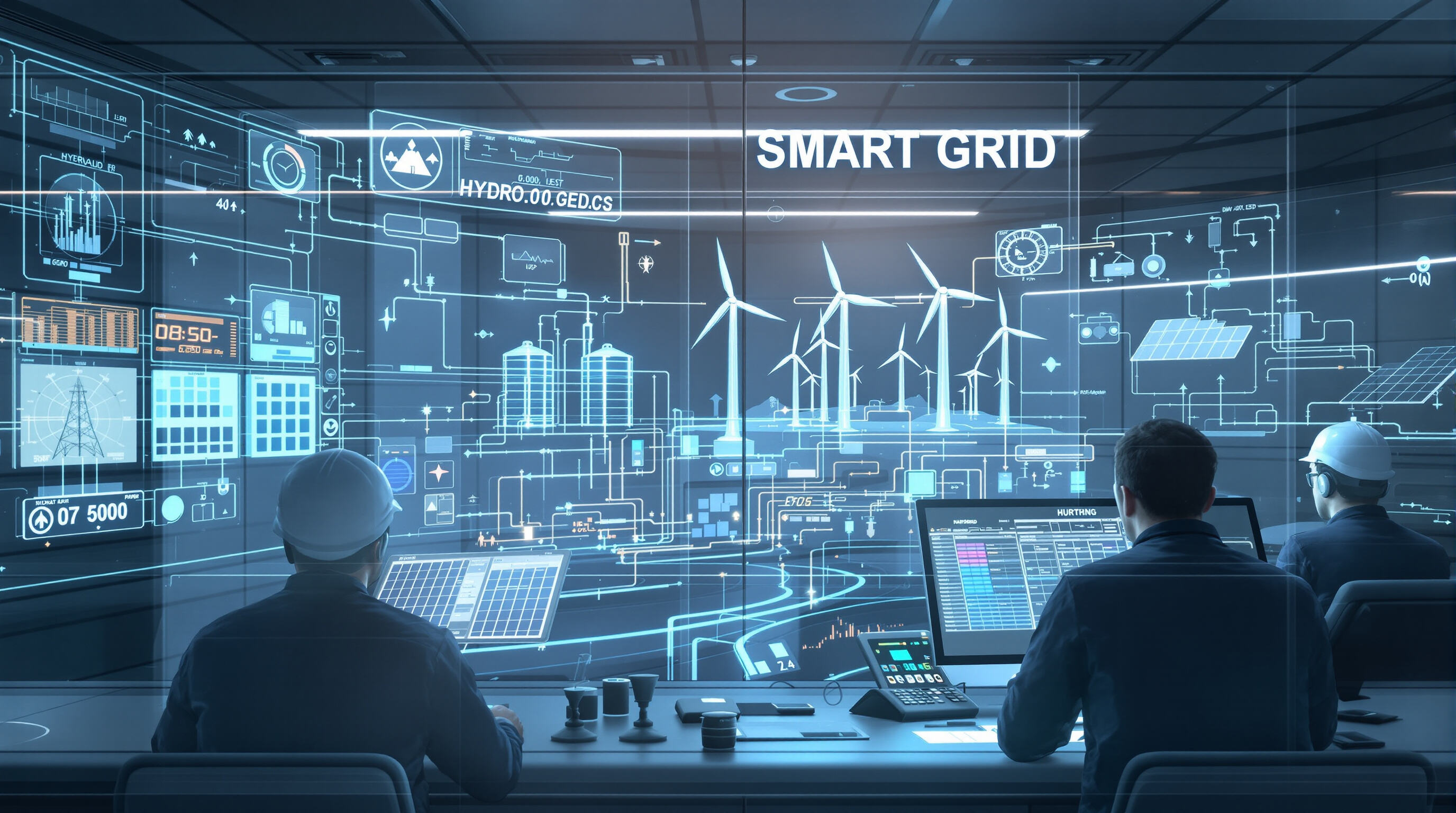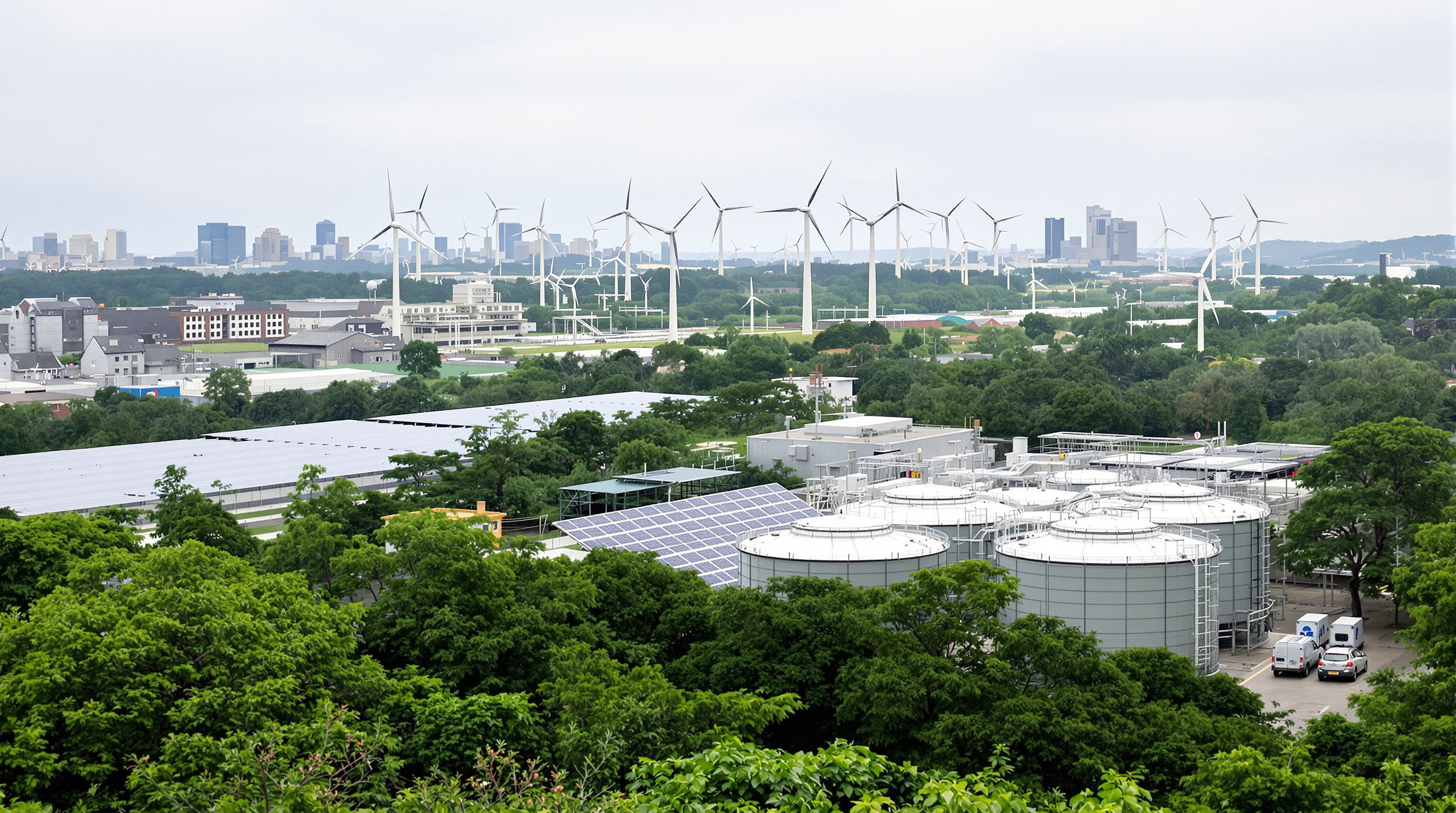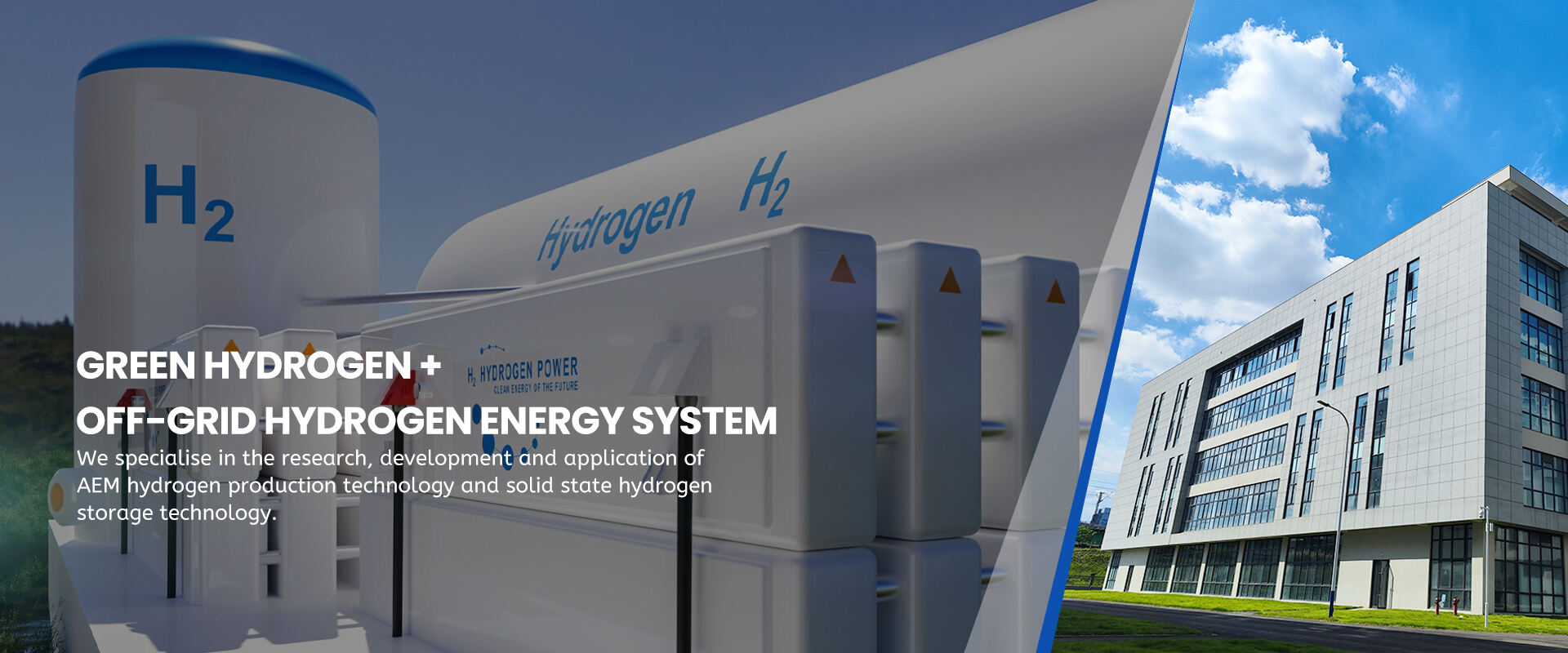The Role of Hydrogen Energy in Modern Smart Grids
Understanding Hydrogen Energy as a Flexible Grid Resource
Hydrogen energy acts as a dynamic grid stabilizer, enabling utilities to store surplus renewable electricity and dispatch it during peak demand. Systems like the Smart Grid Hybrid Electrolysis-and-Combustion System (SGHE-CS) achieve 98.5% efficiency in converting excess power to hydrogen, effectively addressing the intermittency of solar and wind generation.
How Hydrogen Energy Complements Renewable Integration
When hydrogen production matches up with renewable energy generation, power grids actually end up using extra electricity that might get wasted otherwise. Take a look at modern electrolyzer tech these days it runs around 70% efficient or better, which helps smooth out those wild swings we see from wind and solar power. Some real world tests have shown pretty impressive results too. In various pilot programs throughout Europe and parts of North America, this approach cut down on fossil fuel dependence somewhere between 30 to 40 percent. The bonus? Grid operators find their systems become much more stable when they incorporate hydrogen storage solutions alongside traditional renewables.
Grid Stability Challenges Addressed by Hydrogen Storage
Hydrogen’s multi-day and seasonal storage capabilities help balance supply and demand over extended periods. Underground salt caverns offer long-term storage with 96.3% energy retention efficiency and rapid response to grid signals—outperforming batteries in duration and reducing annual grid downtime costs by an estimated $740,000.
Integration Pathways for Hydrogen Energy in Smart Grid Infrastructure

Electrolysis and Power-to-Gas: Key Technologies for Hydrogen Injection
The proton exchange membrane, or PEM electrolysis, plays a key role in getting hydrogen integrated into our energy systems. These systems can convert renewable electricity into usable hydrogen with efficiencies reaching around 98.5%, though real world conditions often bring that number down slightly. The power-to-gas approach lets us put this hydrogen right into current gas pipelines or store it away until needed, which helps balance out those frustrating seasonal gaps when supply doesn't match demand. Looking ahead, manufacturers expect production costs to drop under $2 per kg by sometime around 2030 as they ramp up production. This makes electrolyzers a realistic option for places blessed with lots of sun and wind resources, where the raw materials for hydrogen production are basically free.
Hybrid Systems: Coupling Hydrogen Storage with Solar and Wind Farms
Integrating hydrogen storage with renewable farms reduces curtailment by 97.3% during high-generation periods. In temperate coastal and sunbelt regions, hybrid systems maintain 99.3% operational flexibility despite weather fluctuations. Excess energy is stored as hydrogen and later used in turbines to generate dispatchable power, transforming variable renewables into reliable energy sources.
Smart Grid Communication Systems Enabling Hydrogen Coordination
AI-driven energy management platforms optimize hydrogen production, storage, and usage based on real-time grid conditions, pricing, and weather forecasts. These systems achieve 96.3% efficiency in coordinating electrolyzer operations and combustion schedules. Secure communication protocols enable automatic adjustments to hydrogen injection rates, ensuring stability and safety across the grid.
Economic and Environmental Benefits of Hydrogen Energy in Smart Grids

Reducing Carbon Emissions Through Green Hydrogen Utilization
When made through electrolysis powered by renewables, green hydrogen cuts down on CO2 emissions from power grids by roughly 70 percent when compared with traditional fossil fuels. Cities running smart grid experiments have seen real results too one pilot program managed to cut back on about 12,600 megawatt hours worth of fossil fuel usage each year just by mixing hydrogen into their energy mix. Looking ahead, the International Renewable Energy Agency thinks we might see green hydrogen kicking out around 50 million tons of carbon dioxide every year by the time we hit 2030. That's a lot of emissions saved, especially as manufacturing gets cheaper and the whole process becomes more efficient over time.
Long-Term Cost Savings from Hydrogen-Based Energy Storage
Hydrogen storage systems typically have lifespans around 40 years before showing much wear and tear, which makes them pretty valuable from an economic standpoint. When it comes to large scale microgrid operations, shifting energy usage during peak pricing hours can result in annual savings of approximately $468,000. Research published in 2025 looked at microgrids optimized with artificial intelligence and discovered something interesting these systems cut reliance on the main power grid by about half while also reducing day-to-day running expenses by nearly 18%. The reason? These smart systems balance supply and demand predictions better than traditional approaches. What really stands out about hydrogen though is its versatility. It serves both as long term storage solution and as actual transportation fuel. This dual function lets operators buy low in one region and sell high elsewhere, creating financial stability even when market conditions fluctuate.
Balancing High Initial Costs with Lifecycle Efficiency Gains
Although hydrogen infrastructure requires 20—30% higher upfront investment than lithium-ion batteries, lifecycle advantages make it more cost-effective over time:
| Metric | Hydrogen Systems | Lithium-Ion Systems |
|---|---|---|
| Levelized storage cost | $140/MWh | $230/MWh |
| Cycle efficiency | 58% | 85% |
| Calendar lifespan | 30+ years | 10—15 years |
For grids exceeding 100 MW, hydrogen’s scalability and longevity result in 62% lower total ownership costs over 25 years. Power-to-gas tax credits in the U.S. and EU are further accelerating ROI, with payback periods now under eight years.
Overcoming Technical Challenges in Hydrogen Grid Integration
Hydrogen integration faces challenges in production efficiency and infrastructure durability. Advances in proton exchange membrane (PEM) electrolysis have improved conversion efficiency by 15—20% over traditional alkaline methods. Meanwhile, material science innovations show advanced alloys can reduce hydrogen embrittlement by 40% in pipelines, extending asset life and improving safety.
Improving Efficiency in Hydrogen Production and Conversion
Modern electrolyzers achieve 72—78% efficiency thanks to advanced catalysts and dynamic load management. PEM systems can scale production between 30—200 MW within minutes, synchronizing with real-time renewable availability. This responsiveness minimizes curtailment and reduces energy waste by up to 25%.
Ensuring Material Compatibility and Safety in Hydrogen Networks
High-pressure storage relies on chromium-nickel steel alloys that lower embrittlement risk by 60% compared to conventional materials. Fiber-optic sensors integrated into smart monitoring systems detect leaks with 99.5% accuracy and trigger shutdowns within 50 milliseconds. These advancements support safe hydrogen blending up to 20% in existing natural gas infrastructure without costly retrofits.
Policy and Regulatory Support for Hydrogen Energy Adoption
EU and U.S. Incentives for Hydrogen-Ready Smart Grid Projects
The European Union's REPowerEU initiative is setting aside around 3 billion euros (about $3.2 billion) until 2030 to build out hydrogen ready grid systems. By that same year, they want at least half of all industrial gas usage to come from renewable sources. Over in America, Congress passed the Bipartisan Infrastructure Law back in 2022 which dedicated nearly $9.5 billion towards creating clean hydrogen hubs across the country. The law also includes some pretty generous tax breaks for companies producing low carbon hydrogen, going as high as $3 per kilogram. These kinds of financial incentives are really important because getting started with hydrogen tech requires massive upfront investments. Just look at electrolyzers, those devices cost roughly $1,200 per kilowatt on average. Still, governments see this as worth it since it moves them closer to their climate targets.
Standardizing Hydrogen Injection into Natural Gas Grids
Government bodies across Europe are making it easier to mix hydrogen with natural gas in current pipeline systems. According to European Union regulations, the allowable blend stands at 2% right now but will jump to 20% by the end of this decade as part of their broader Hydrogen Strategy. Last year's updated EU Gas Package introduced some important safety measures too. Pipelines carrying more than 10% hydrogen need special material tests because older steel pipes (which make up nearly 9 out of 10 existing lines) can become brittle when exposed to hydrogen over time. For safety reasons, new rules also require adding smell markers whenever hydrogen concentration reaches 5% or higher. And in city environments, authorities want leak detectors installed roughly every half kilometer along these mixed gas lines to catch any potential issues early on.
These frameworks reduce investor uncertainty and position hydrogen to meet 12—14% of global energy demand by 2040, cutting emissions by 80 million tons of CO₂ annually compared to conventional grid balancing methods.
Frequently Asked Questions (FAQ)
What role does hydrogen play in modern smart grids?
Hydrogen acts as a flexible energy storage solution, helping balance supply and demand by storing excess renewable energy and providing power during peak demand.
How does hydrogen complement renewable energy integration?
By converting surplus renewable energy into hydrogen, this approach reduces dependency on fossil fuels and increases grid stability, especially during periods of variable renewable generation.
What are the economic benefits of hydrogen in smart grids?
Hydrogen-based energy storage offers long-term cost savings, reduces reliance on the main power grid, and allows operators to capitalize on regional energy market fluctuations.
Are there challenges to integrating hydrogen into the grid?
Yes, challenges include production efficiency and infrastructure durability, though advances in technology and materials are increasingly mitigating these issues.
How are governments supporting hydrogen energy adoption?
Incentives include financial funding, tax breaks, and regulatory frameworks to encourage the development and integration of hydrogen technologies in energy systems.


